30 Best Horse Illustration Ideas You Should Check

Source: Robybaer, Quarter Horse Paint Stallion, DeviantArt, https://www.deviantart.com/robybaer/art/Quarter-horse-paint-stallion-825847450
Looking for the most stunning horse illustration ideas? You’ve galloped into the right place! Whether you’re an artist, a designer, or someone who simply loves equestrian beauty, a well-crafted horse illustration can capture the power, grace, and elegance of these majestic creatures like no other.
From bold, minimalist line art to detailed, lifelike renderings, horse illustration styles come in all forms. Some designs embrace wild, untamed energy with abstract strokes, while others focus on intricate details that bring every muscle and motion to life. And let’s not forget whimsical and fantasy-inspired illustrations—because who doesn’t love a mythical Pegasus or a dreamlike watercolor stallion?
In this article, we’ll trot through some of the best horse illustration ideas, showcasing designs that inspire creativity and highlight different artistic approaches. So saddle up and let’s dive into the world of horse illustration!
Horse Illustration Ideas
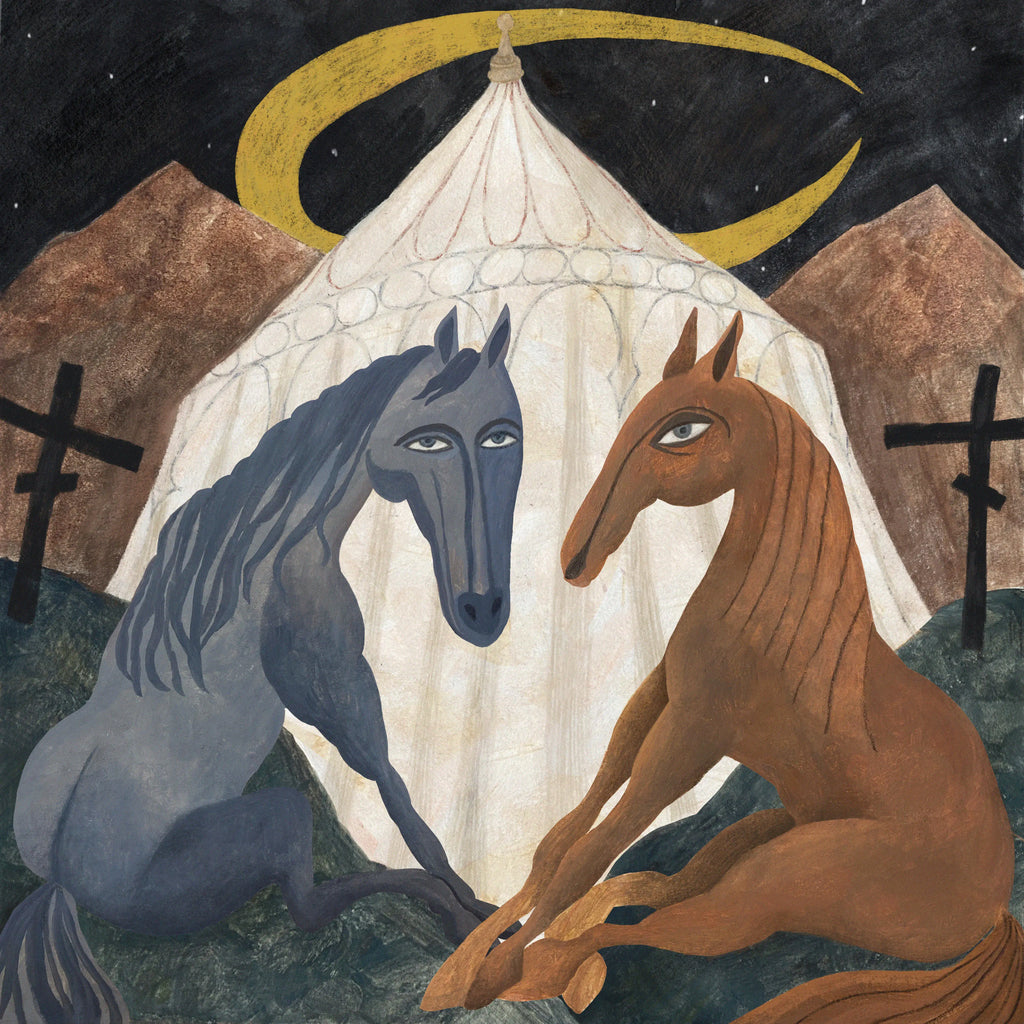
Source: Anna Lisiak, The Tale of the Golden Cockerel, Behance, https://www.behance.net/gallery/208148505/Illustrations-for-a-fairy-tale

Source: Dalgeor, Spirit And Rain, DeviantArt, https://www.deviantart.com/dalgeor/art/Spirit-and-Rain-941020905
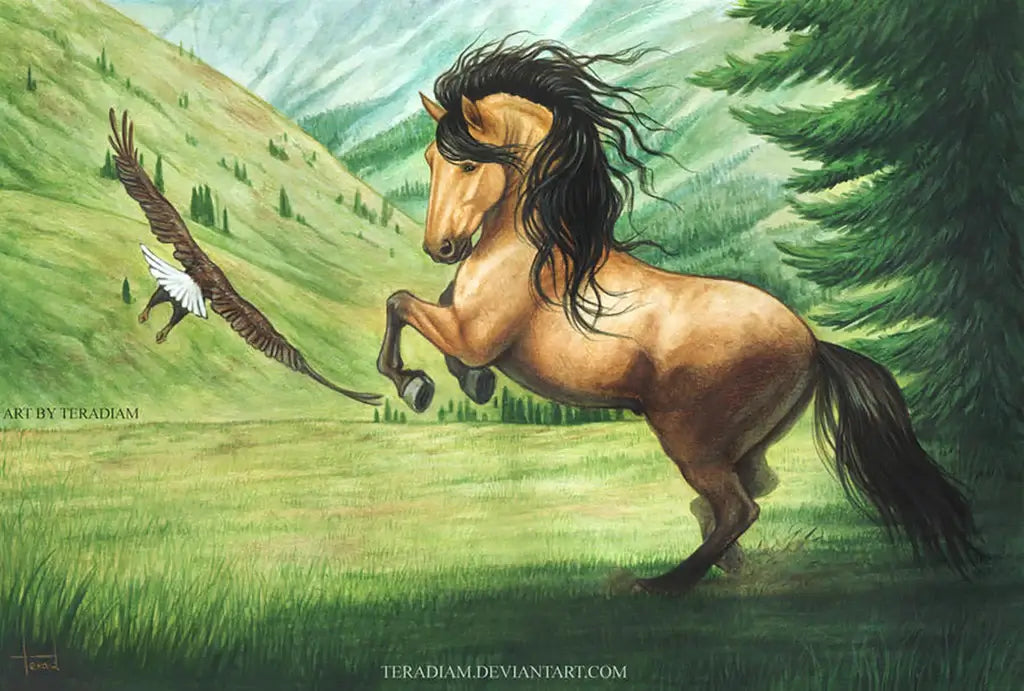
Source: Teradiam, Racing With The Eagle, DeviantArt, https://www.deviantart.com/teradiam/art/Racing-with-the-eagle-754688280

Source: Atomiccircus, Horse Color Pencil Drawing, DeviantArt, https://www.deviantart.com/atomiccircus/art/Horse-Color-Pencil-Drawing-510367867
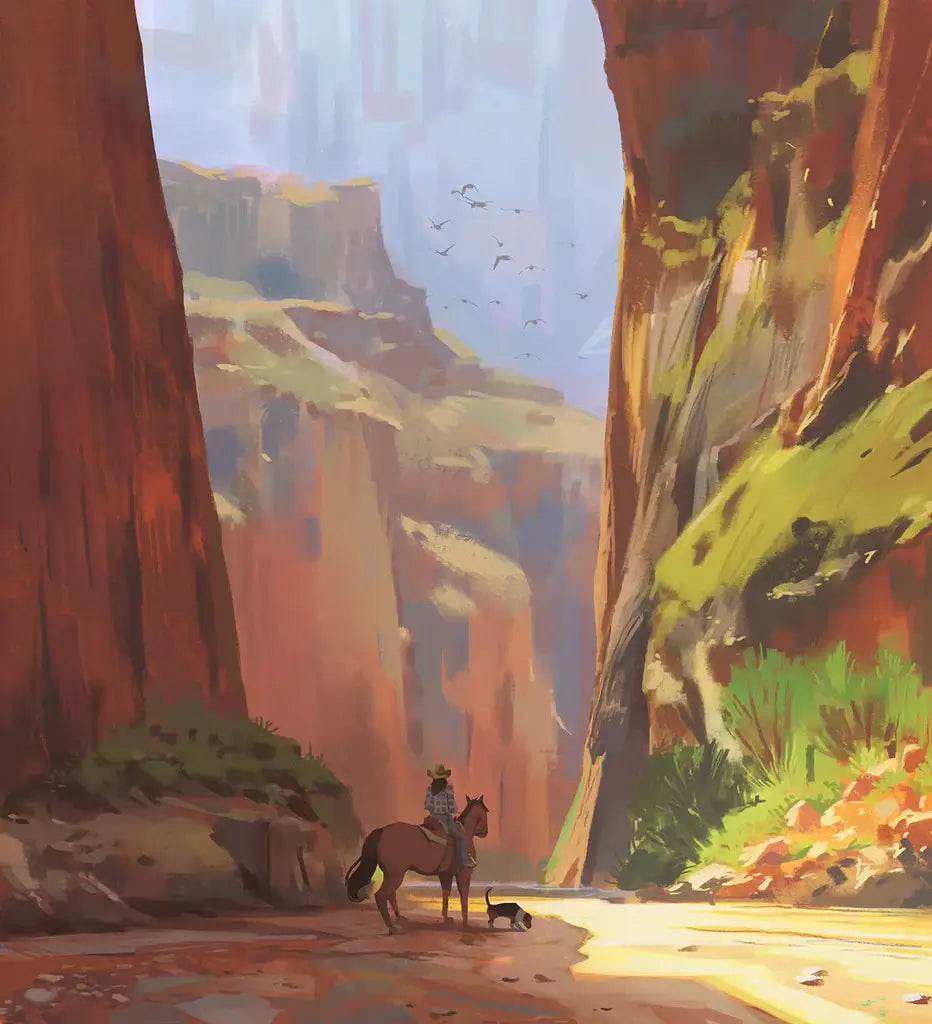
Source: Snatti89, Grand Canyon, DeviantArt, https://www.deviantart.com/snatti89/art/Grand-canyon-813118386

Source: Pegaite, Horse Of Color, DeviantArt, https://www.deviantart.com/pegaite/art/Horse-of-Color-770322180
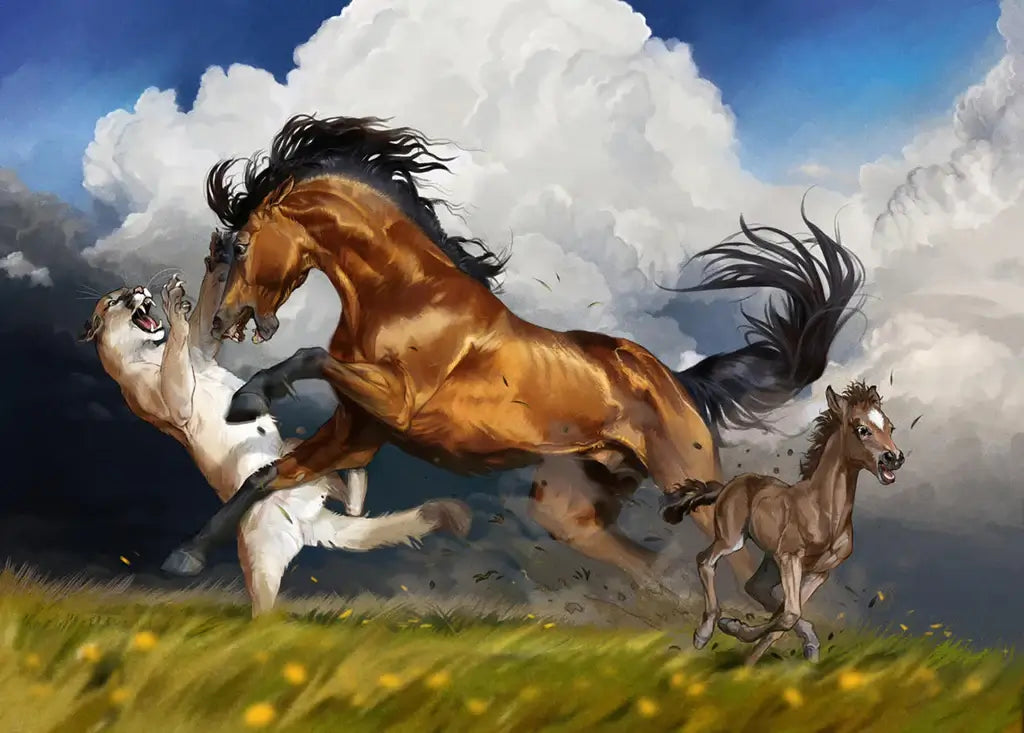
Source: Shmelyatom, DeviantArt, https://www.deviantart.com/shmelyatom/art/Spirit-900716180
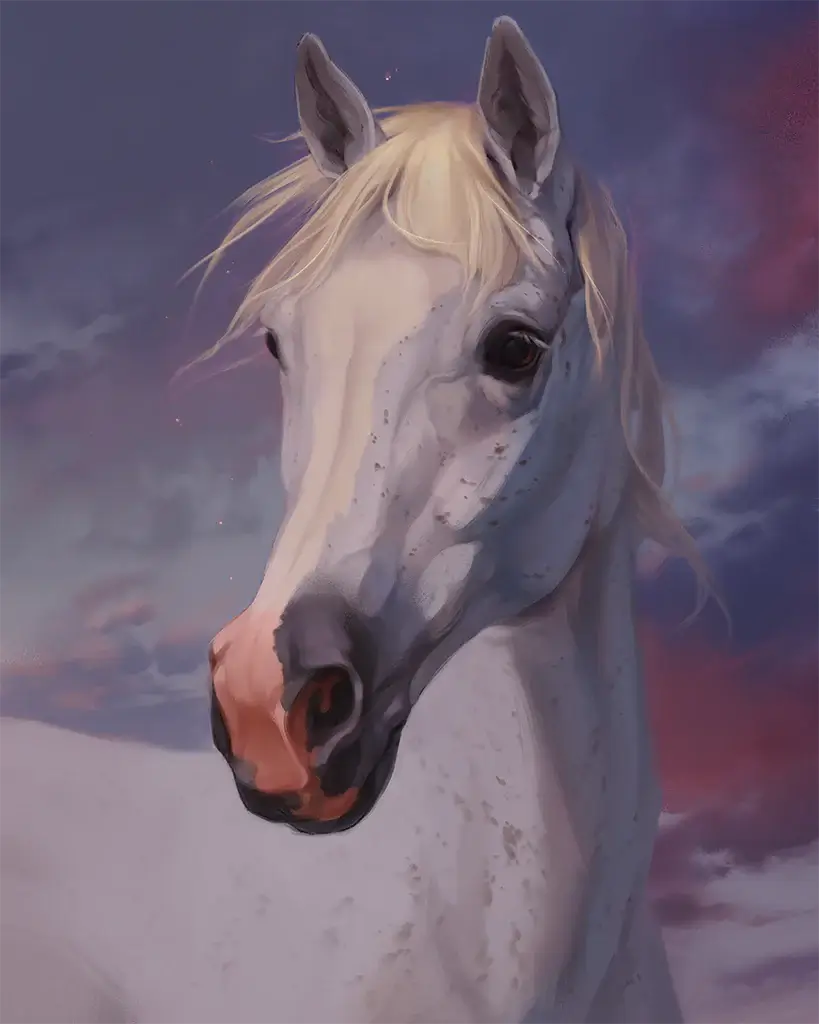
Source: Shrimpu-Art, DeviantArt, https://www.deviantart.com/shrimpu-art/art/Sunset-851230005
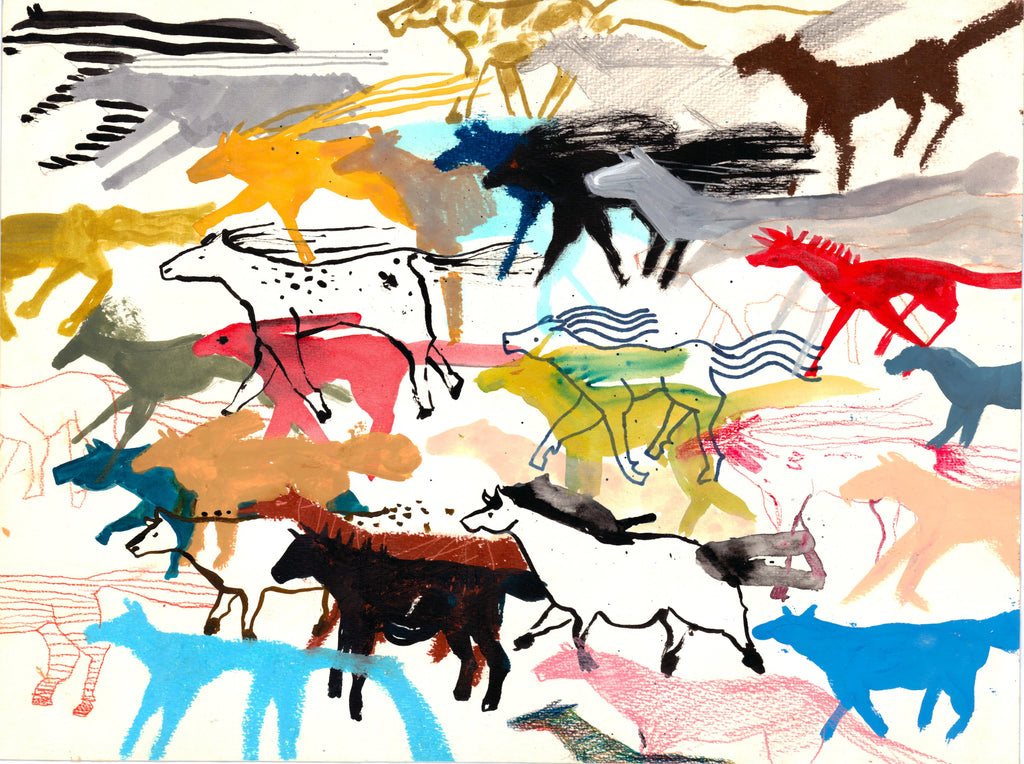
Source: Maria Troika, Behance, https://www.behance.net/gallery/203650837/horse-illustrationanimal-illustration
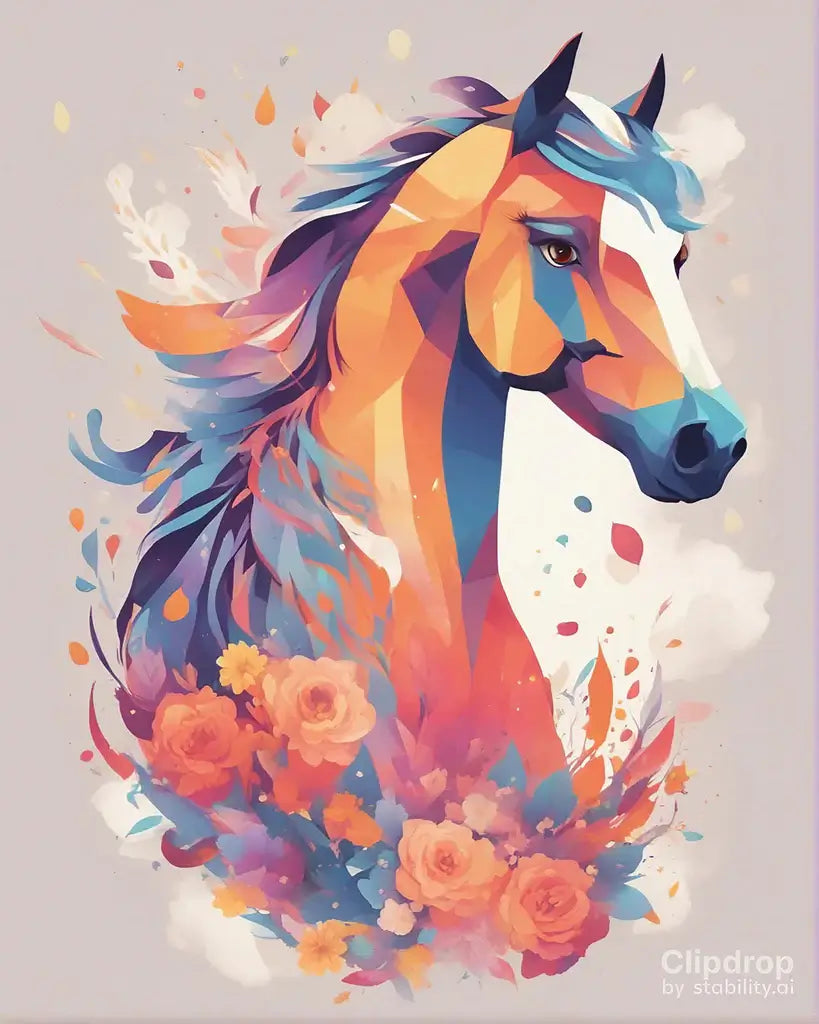
Source: Jelleatromitos, Horse Portrait, DeviantArt, https://www.deviantart.com/jelleatromitos/art/Horse-portrait-var1-980753658
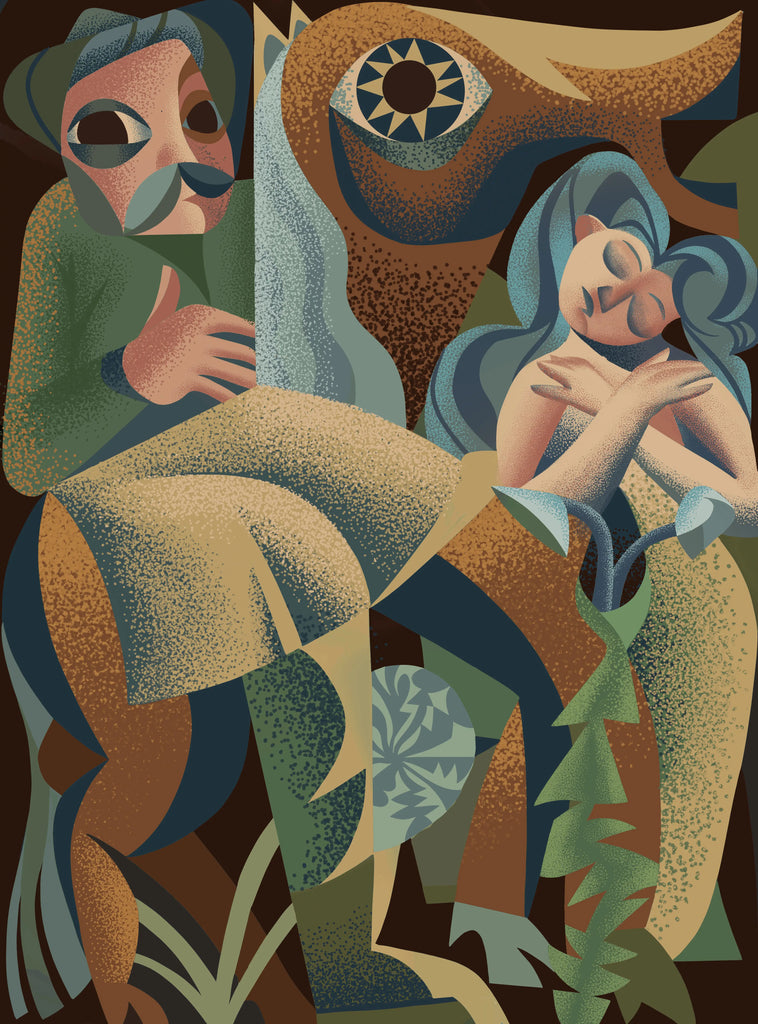
Source: Marcin Czaja, Legend Mural, Behance, https://www.behance.net/gallery/219835915/Legend-mural

Source: Pegaite, Horse On The Run, DeviantArt, https://www.deviantart.com/pegaite/art/Horse-On-The-Run-788574968

Source: Sinakasra, The Bounty Hunter, DeviantArt, https://www.deviantart.com/sinakasra/art/The-Bounty-Hunter-867535666

Source: Alexaria, Greatness, DeviantArt, https://www.deviantart.com/alexaria/art/Greatness-910592964

Source: Manweri, Nightmare, DeviantArt, https://www.deviantart.com/manweri/art/Nightmare-667512300
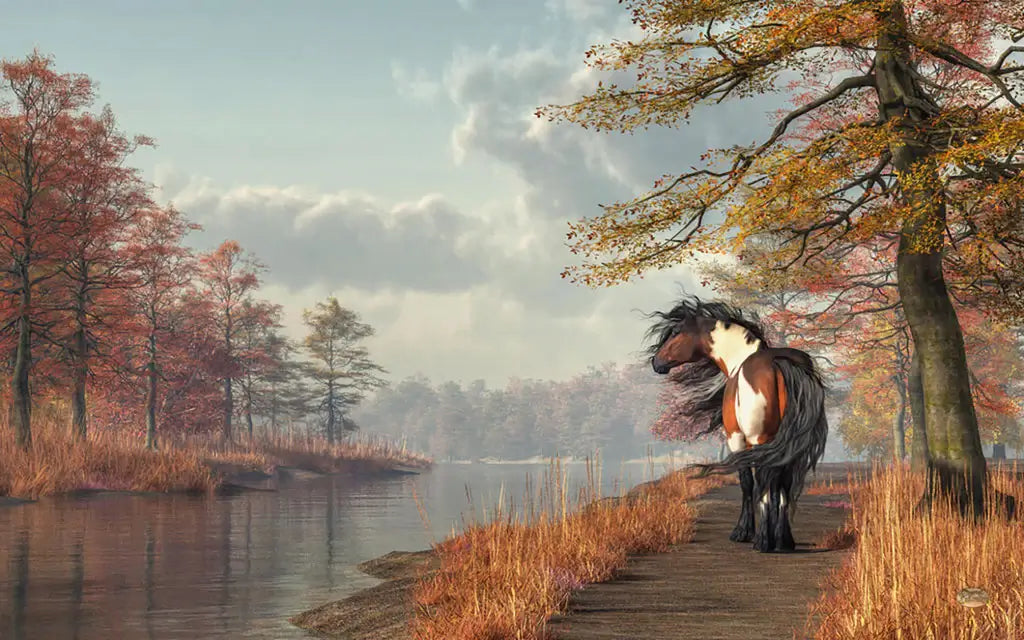
Source: Deskridge, Pinto Horse On A Riverside Trail, DeviantArt, https://www.deviantart.com/deskridge/art/Pinto-Horse-on-a-Riverside-Trail-639979012
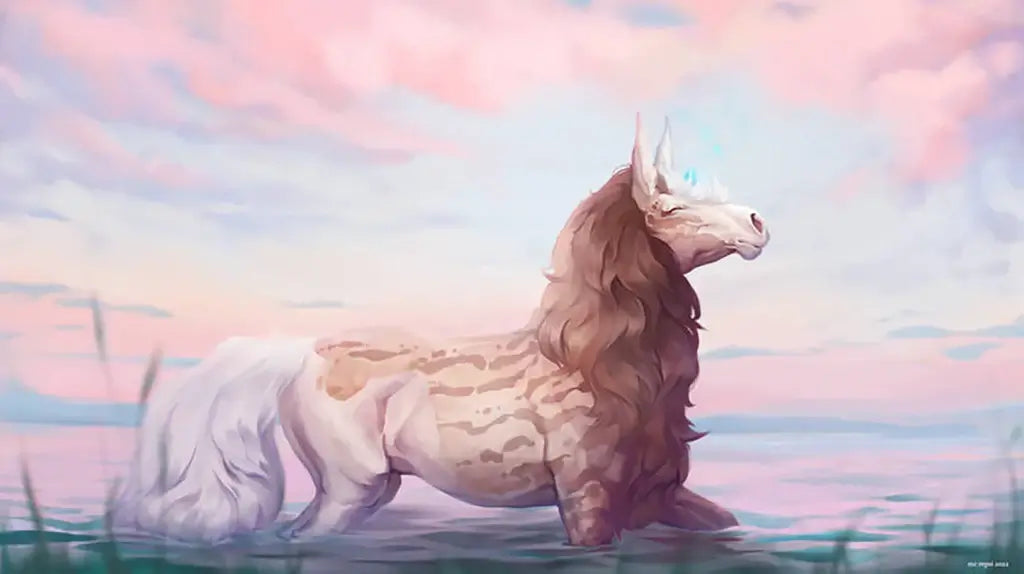
Source: Mcrepsi, DeviantArt, https://www.deviantart.com/mcrepsi/art/Akraia-cayfie-yhh-Frosty-lake-905010698
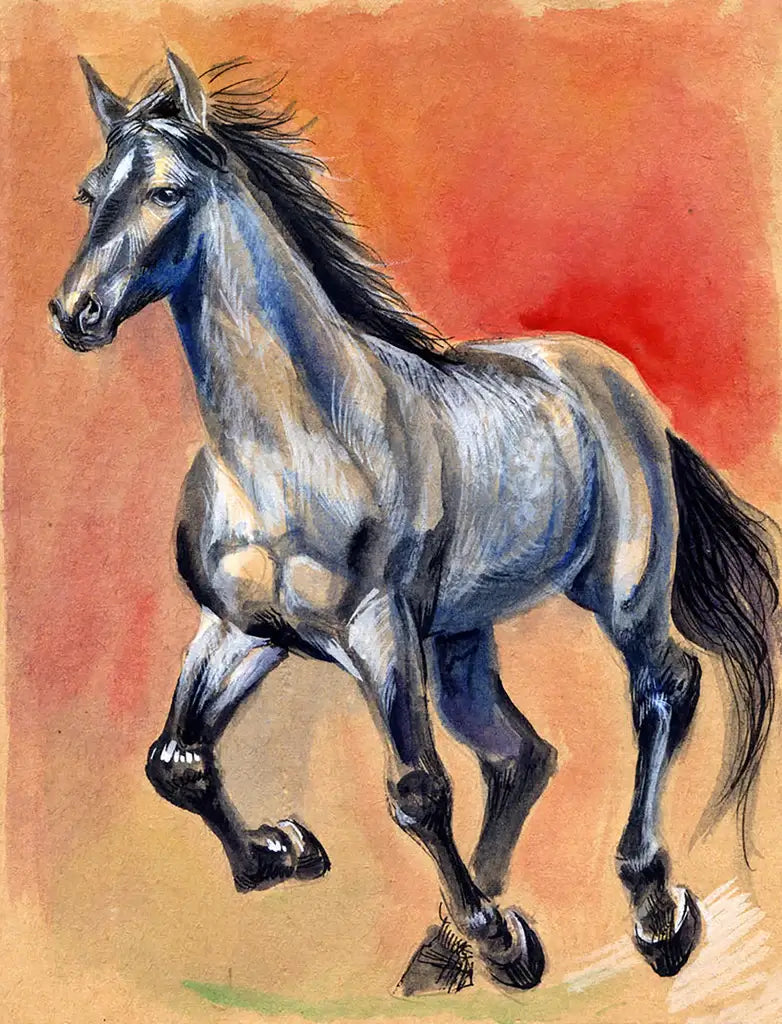
Source: Solar-Sea, Pearlescent Grey, DeviantArt, https://www.deviantart.com/solar-sea/art/Pearlescent-Grey-890035048
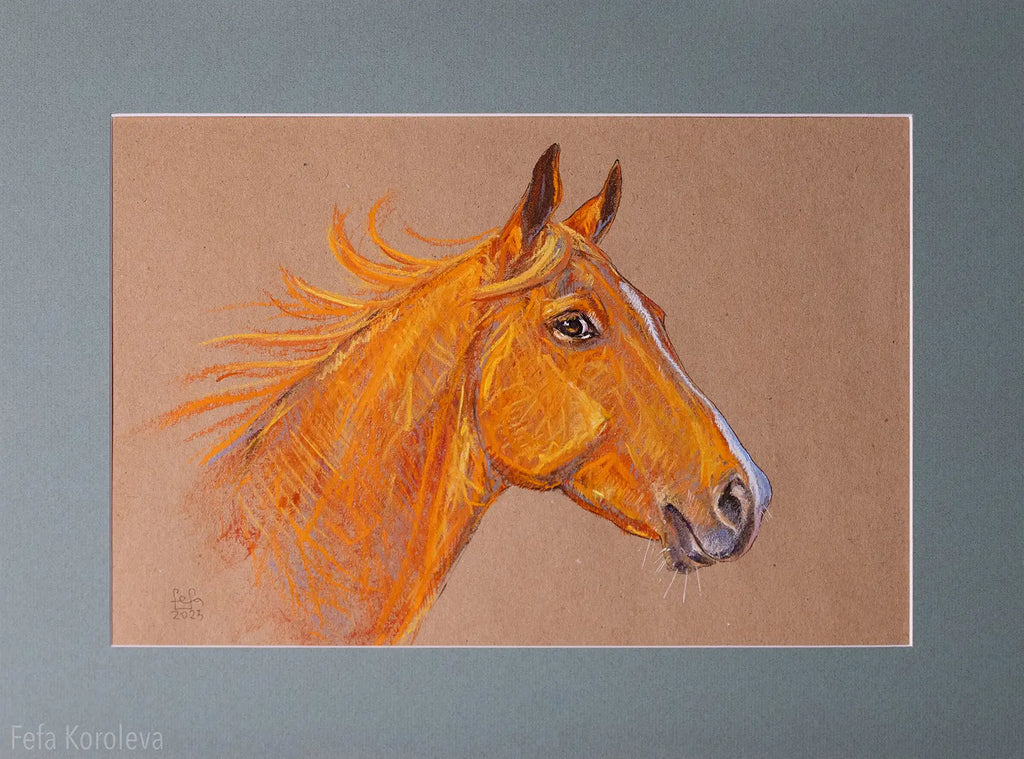
Source: Fefa Koroleva, Tiramisu, Behance, https://www.behance.net/gallery/221889589/Tiramisu

Source: Alexaria, Serenity, DeviantArt, https://www.deviantart.com/alexaria/art/Serenity-YCH-909224583
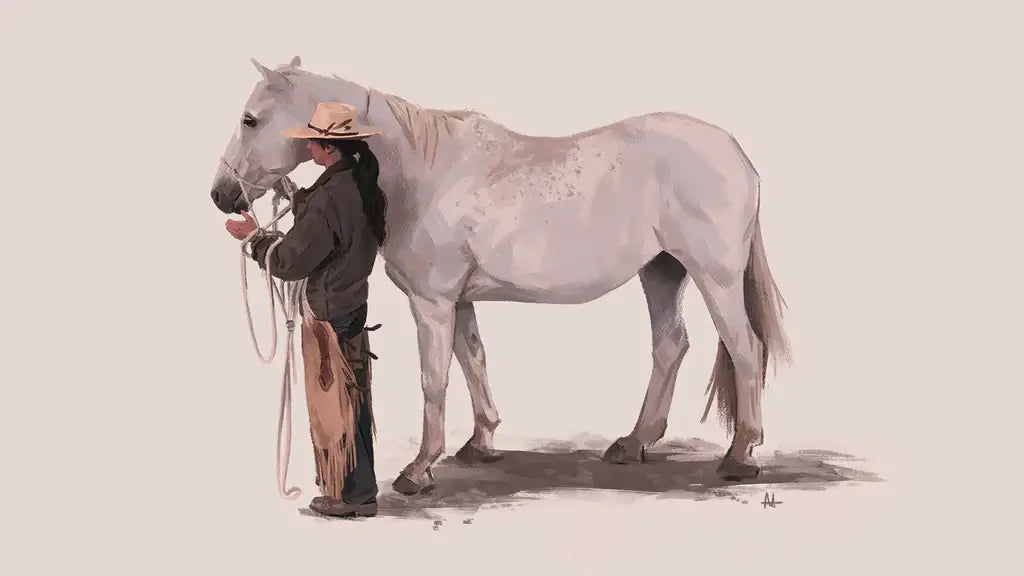
Source: Alexneonakis, Wrangler, DeviantArt, https://www.deviantart.com/alexneonakis/art/Wrangler-814617701
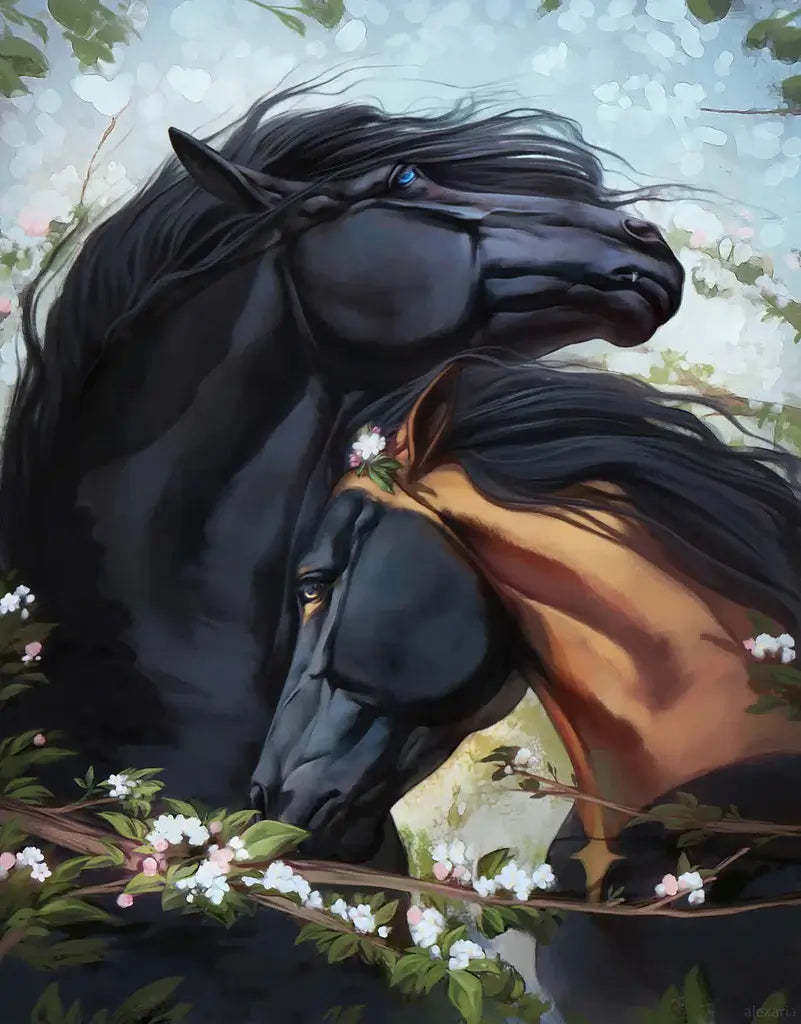
Source: Alexaria, Couple, DeviantArt, https://www.deviantart.com/alexaria/art/Couple-914869376
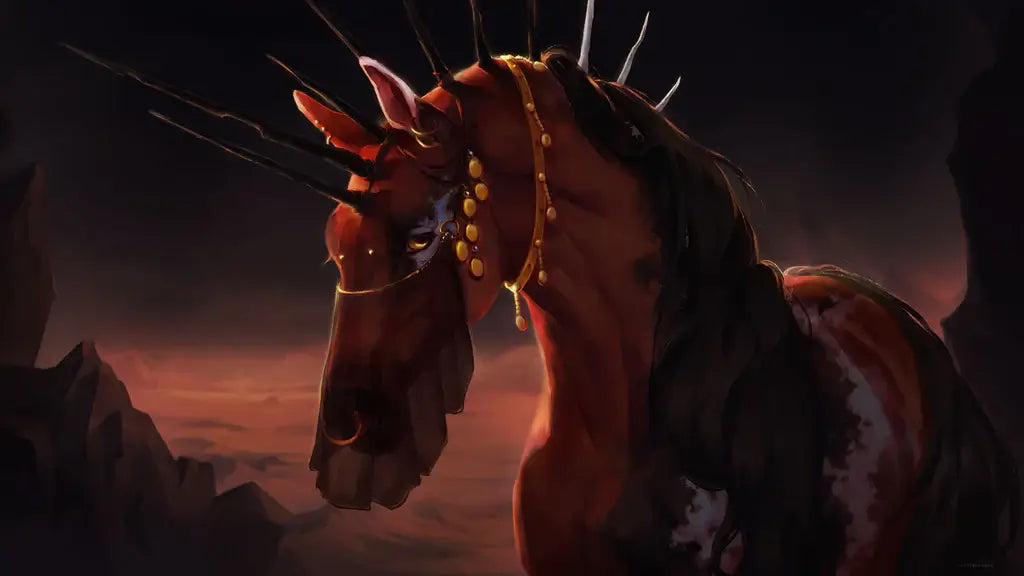
Source: Mcrepsi, Mcrepsi, DeviantArt, https://www.deviantart.com/mcrepsi/art/Fever-917888635

Source: Giovanna Accadia, Behance, https://www.behance.net/gallery/175560193/Horse-Illustration

Source: Irina Lisichkina, So Night Comes, Behance, https://www.behance.net/gallery/75105735/so-night-comes
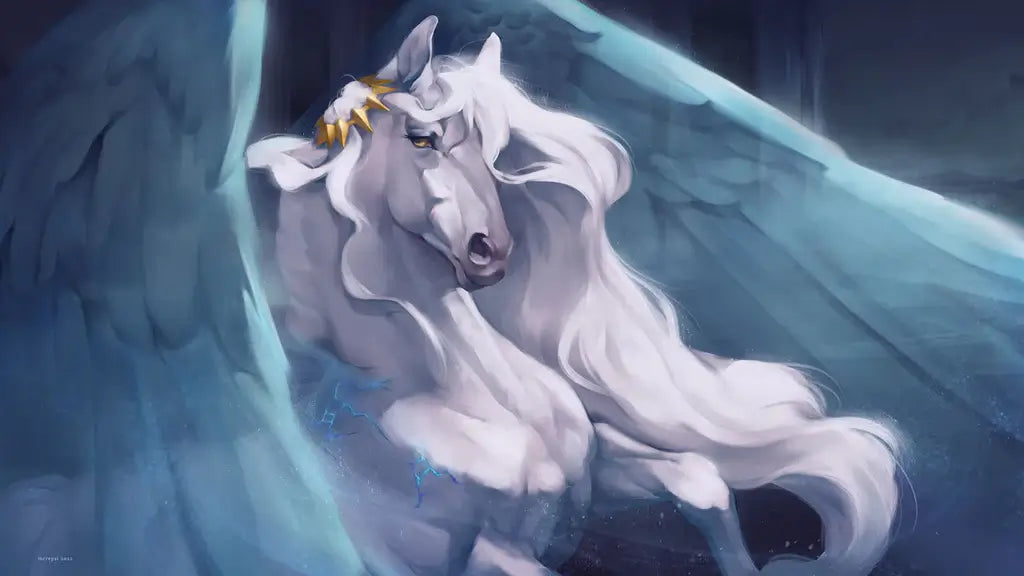
Source: Mcrepsi, DeviantArt, https://www.deviantart.com/mcrepsi/art/Aelin-917119637

Source: Ariesredlo, Charity, DeviantArt, https://www.deviantart.com/ariesredlo/art/Charity-YHH-802920714
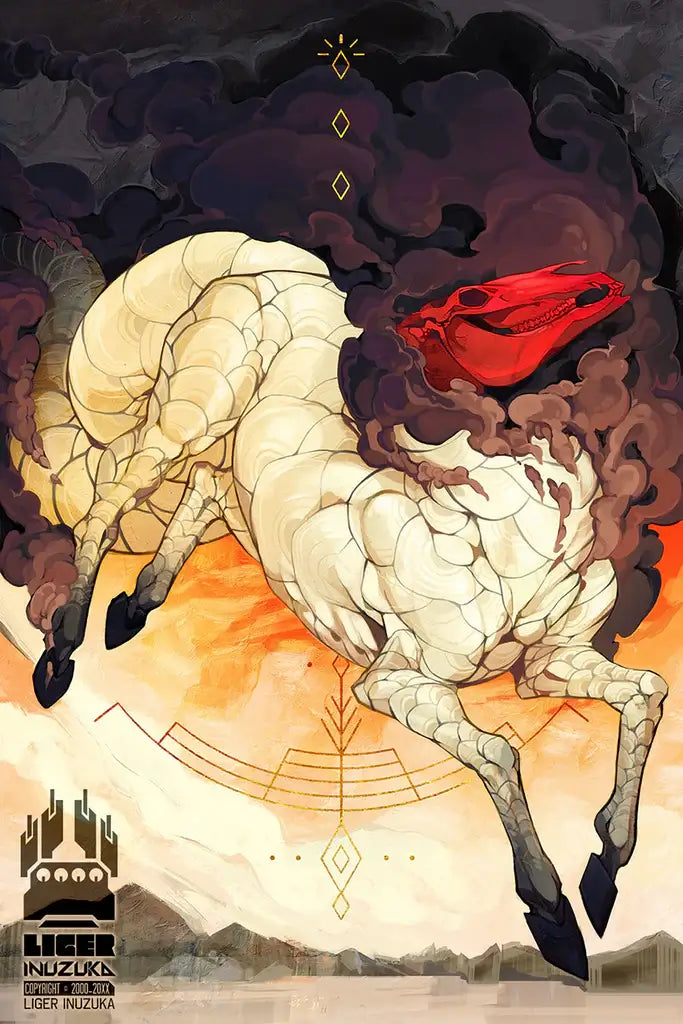
Source: Liger-Inuzuka, Red Tempest, DeviantArt, https://www.deviantart.com/liger-inuzuka/art/Red-Tempest-580022124
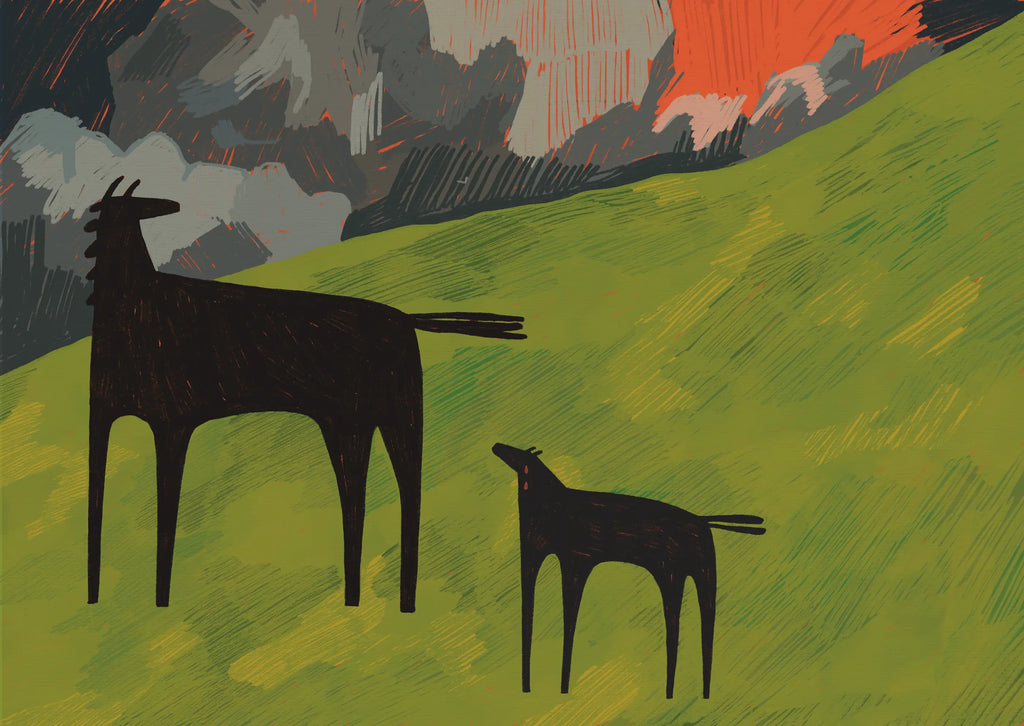
Source: Maria Osipova, One Big Horse And One Small Horsey, Behance, https://www.behance.net/gallery/223231357/one-big-horse-and-one-small-horsey

Source: Robybaer, Quarter Horse Paint Stallion, DeviantArt, https://www.deviantart.com/robybaer/art/Quarter-horse-paint-stallion-825847450
What Are the Key Features of a Good Horse Illustration?
A horse illustration isn’t just about drawing a horse—it’s about capturing its energy, elegance, and character. Whether you're creating a realistic portrait or a whimsical, stylized piece, certain key features make a horse illustration truly stand out. If you want your artwork to have that “wow” factor, here are five essential elements to keep in mind.
Anatomical Accuracy (Even in Stylized Art)
Horses have a unique body structure—strong legs, arched necks, and powerful muscles that define their movements. Even if you’re going for a cartoonish or abstract style, understanding horse anatomy is a must. A well-drawn horse illustration maintains correct proportions, whether it's a prancing stallion or a grazing pony. If the legs are too short or the head too big, the horse might look off-balance (unless that’s your artistic intent!). Studying real horse references will help your drawings feel more natural and dynamic.
Expressive Movement and Flow
Horses are known for their graceful and powerful movements. A stiff-looking horse can make an illustration feel lifeless, so capturing the flow of motion is crucial. Whether it’s a galloping racehorse, a rearing mustang, or a peaceful horse resting in a meadow, your horse illustration should convey a sense of energy and direction. Pay attention to how a horse's legs, tail, and mane interact with motion—using curved lines and dynamic poses can add an extra level of realism and excitement.
Attention to Detail in Features
Even a simple horse illustration benefits from well-placed details. Horses have expressive eyes, detailed facial structures, and distinctive coat patterns. A great illustration includes subtle features like the flare of a nostril, the shine in the eyes, or the texture of the mane and tail. Whether you’re working in realism or a minimal style, these details bring personality to your artwork. A horse’s posture and ear position can also express mood—alert ears show curiosity, while pinned-back ears might indicate aggression or discomfort.
Creative Use of Color and Shading
Color choices can dramatically affect the mood of a horse illustration. Traditional browns, blacks, and whites work well for realistic depictions, but don’t be afraid to experiment with bold colors, gradients, and stylized patterns. Even in monochrome or line art, shading can make a huge difference. Using highlights and shadows to emphasize the horse’s muscles and contours adds dimension, making the illustration feel more lifelike. Watercolor effects, digital gradients, or even textured brushes can bring a creative touch to your design.
Strong Composition and Background Elements
A horse illustration isn’t just about the horse itself—the composition and background play a big role in storytelling. A horse standing alone in a blank space might feel incomplete, while one placed in a scenic landscape or paired with complementary design elements adds depth. Even a minimalistic approach can benefit from thoughtful composition, like placing the horse dynamically within the frame. If your illustration tells a story—whether it’s a wild horse running free or a knight’s noble steed—it becomes far more engaging to the viewer.
A good horse illustration balances technical accuracy with artistic creativity. Whether you’re sketching, painting, or working digitally, focusing on anatomy, movement, detail, color, and composition will ensure your artwork stands out.
What Styles Are Popular in Horse Illustration?
A horse illustration can be as bold, elegant, or whimsical as you want it to be. With so many artistic approaches, there’s no single right way to illustrate a horse—only endless possibilities! From highly realistic renderings to playful cartoon styles, the best horse illustration styles bring these majestic animals to life in unique and creative ways. Whether you prefer a minimalist look or something packed with intricate detail, here are five of the most popular styles in horse illustration.
Realistic and Detailed Illustrations
For those who love precision and lifelike artistry, realistic horse illustration is a stunning option. This style focuses on accurate anatomy, detailed textures, and careful shading to capture the true beauty of a horse. Realistic illustrations often showcase individual hairs in the mane and tail, intricate muscle structures, and even the unique expressions in a horse’s eyes. Many artists use graphite, colored pencils, or digital painting techniques to achieve an ultra-detailed look that feels almost photographic. This style is perfect for equestrian enthusiasts and those looking to create breathtakingly accurate representations of different horse breeds.
Minimalist Line Art
Sometimes, less is more! Minimalist horse illustration relies on clean, simple lines to convey the essence of a horse without unnecessary details. A single, flowing stroke can capture the grace of a galloping steed, while delicate contour lines can define a horse’s head or mane with elegance. This style is often seen in tattoo designs, logo art, and modern decorative illustrations. It works beautifully for those who appreciate understated yet powerful artwork, and it translates well across various mediums, from digital graphics to hand-drawn ink sketches.
Cartoon and Whimsical Styles
Not all horse illustration has to be serious! Cartoon and whimsical styles offer a fun and expressive way to depict horses. Whether it's exaggerated features, cute proportions, or playful color schemes, cartoon-style horses bring a lively energy to any artwork. This style is especially popular in children’s books, animation, and character design. Horses can have big, expressive eyes, exaggerated movements, and even accessories like hats or bows to add personality. It’s a great style for storytelling, making people smile, and adding a touch of humor or fantasy to horse-themed art.
Watercolor and Loose Sketching
For a more artistic and fluid look, watercolor-style horse illustration is a favorite. This approach uses soft, blended colors and loose brushstrokes to create dreamy, impressionistic horse designs. The beauty of watercolor (whether traditional or digital) is its ability to capture movement and emotion in an abstract yet recognizable way. Similarly, loose sketching—where artists use expressive, rapid lines—creates an energetic and spontaneous feel. These styles work well for those who want to showcase movement and atmosphere rather than rigid details.
Fantasy and Mythological Themes
Who says horse illustration has to stay realistic? Fantasy-inspired designs bring imagination into play, featuring unicorns, winged horses, and mythical creatures. Artists use glowing effects, surreal color palettes, and intricate patterns to create magical horses that feel otherworldly. Whether it’s a fire-breathing stallion or a celestial Pegasus, fantasy horse illustrations captivate viewers with their creativity and storytelling. This style is perfect for book covers, gaming art, and any design that requires a touch of magic.
With so many different styles of horse illustration to explore, there’s a perfect one for every artist and project. Whether you prefer the detail of realism, the simplicity of line art, the charm of cartoons, the expressiveness of watercolor, or the imagination of fantasy, each style has something unique to offer.
What Are Some Fun Ways to Experiment With Horse Illustration?
If you’ve ever drawn a horse illustration and thought, “How can I make this more exciting?”—you’re in for a creative adventure! Horses are elegant, powerful, and full of movement, making them the perfect subject for artistic experimentation. Whether you’re looking to break out of your usual style or just have some fun, there are plenty of ways to push the boundaries of horse illustration. Let’s explore five exciting techniques that will bring fresh energy to your artwork.
Play With Exaggeration and Proportions
Who says horses have to look realistic? One of the most fun ways to experiment with horse illustration is by exaggerating proportions. Stretch out those legs, give your horse an oversized, expressive head, or shrink the body into a cute, stubby shape. Try playing with a surreal or cartoonish style where everything is a little unexpected. A long, flowing mane that takes over the whole page? Why not! A tiny-legged horse with a massive, elegant neck? Absolutely! The more you experiment with proportions, the more unique and playful your illustrations will become.
Use Unexpected Color Palettes
Horses may naturally come in shades of brown, black, and white, but in the world of illustration, they can be any color. Swap out traditional horse colors for neon blues, pastel pinks, or fiery reds. Try a rainbow-gradient mane or an ombré effect on the horse’s body. You can even go full fantasy and make a glowing, celestial horse with deep purples and electric blues. Changing up your color palette can instantly make a horse illustration feel fresh, bold, and unique.
Experiment With Abstract and Geometric Shapes
What if instead of drawing a horse with smooth lines, you built it entirely out of geometric shapes? Triangles for the legs, circles for the joints, and a flowing series of lines for the mane. Abstract and geometric horse illustration styles can create a modern, striking look while still keeping the essence of a horse intact. Try using only straight lines or layering organic shapes to create a fragmented, cubist-inspired design. This approach is especially fun when working with digital tools, where you can layer and manipulate shapes with precision.
Try Mixed Media Techniques
Don’t limit yourself to one medium—mix things up! Combine watercolor splashes with ink line work, or use textured paper and colored pencils to add depth to your horse illustration. Digital artists can layer textures over their designs, adding rough, painterly effects or even collage elements. You could also scan traditional sketches and enhance them digitally with vibrant colors or experimental textures. The more layers and mixed techniques you incorporate, the more dynamic and visually interesting your illustration will become.
Incorporate Surreal or Fantasy Elements
Want to take your horse illustration into a dreamlike realm? Add surreal or fantasy elements to make your artwork stand out. Maybe your horse has wings, a galaxy-patterned coat, or vines growing from its mane. You could turn your horse into a steampunk mechanical masterpiece with gears and metal plating or make it a mystical creature with glowing symbols on its body. Adding imaginative elements turns a simple horse drawing into a storytelling masterpiece.
Illustration should be fun, and there’s no better way to enjoy it than by pushing the boundaries of what a horse illustration can be. Whether you’re playing with proportions, colors, shapes, mixed media, or fantasy elements, the key is to experiment and let creativity lead the way.
What Elements Can Enhance a Horse Illustration?
When it comes to creating a standout horse illustration, there are several elements that can take your artwork from good to absolutely unforgettable. Whether you're aiming to capture the majestic nature of a stallion or the whimsical charm of a pony, incorporating these key elements can enhance the visual impact and emotional connection of your illustrations. Ready to add some extra sparkle to your equine art? Here are five elements to consider!
Dynamic Poses
Nothing captures the essence of a horse better than a dynamic pose. Whether it’s a galloping stallion with its mane flowing in the wind or a rearing horse full of power and grace, dynamic poses breathe life into your horse illustration. Study the movement of horses to understand how their muscles work and how they express emotion through body language. Experiment with different perspectives and angles to add drama and action to your illustration, making the viewer feel the horse’s movement as if it’s leaping off the page.
Detailed Textures
The devil is in the details, or in this case, the texture! Enhancing your horse illustration with realistic or stylized textures can make a huge difference. Focus on the fine hairs of the coat, the silky strands of the mane and tail, and even the roughness of the hooves. Using techniques like hatching, stippling, or detailed brush strokes in digital art can add depth and realism. Textures not only make your horse look more lifelike but also add a tactile element that invites viewers to virtually "touch" the artwork.
Contrasting Light and Shadow
Play with light and shadow to give your horse illustration a three-dimensional feel. Proper shading can dramatically enhance the form and structure of the horse, highlighting the muscle curves and bone structure. Consider the direction of the light source and how it affects the scene. Adding high contrast in the lighting can create a dramatic mood, while softer lighting can convey a calm, serene atmosphere. This not only brings out the physical attributes of the horse but also sets the overall tone of the piece.
Eye-Catching Backgrounds
While the horse might be the star of your illustration, the background shouldn't be an afterthought. An engaging background can contextualize the scene, add depth, and enhance the story you’re telling. Whether it’s a simple shaded backdrop that focuses attention on the horse or a detailed landscape that depicts a natural habitat, the background complements the main subject. Consider using backgrounds that reflect the mood of the horse—perhaps a stormy sky for a wild mustang or a tranquil meadow for a gentle mare.
Emotional Expression
Horses are not only beautiful but also highly expressive creatures. Capturing the right expression in your horse illustration can communicate the horse's mood and personality. Pay attention to the eyes, ears, and nostrils. A horse’s eyes can show a wide range of emotions, from calmness to fear, while the position of the ears can indicate alertness, relaxation, or aggression. An accurately depicted expression will make your illustration resonate emotionally with viewers, bringing the horse to life.
Incorporating these elements into your horse illustration will not only improve your artistic skills but also enhance the depth and appeal of your artwork. Dynamic poses, detailed textures, dramatic lighting, thoughtfully designed backgrounds, and expressive facial features are powerful tools in your artist’s toolkit.
What Backgrounds Work Best for a Horse Illustration?
When creating a horse illustration, choosing the right background can be as crucial as the horse itself. The backdrop sets the stage, tells a story, and can dramatically affect the overall mood and impact of your artwork. Whether you're aiming for drama, tranquility, or a touch of whimsy, selecting the perfect background will elevate your horse illustration from simple to spectacular. Let's gallop through five types of backgrounds that harmonize beautifully with horse illustrations!
Natural Landscapes
Horses are synonymous with the great outdoors, so natural landscapes are a fail-safe background choice. Rolling hills, lush meadows, or a rugged mountain range can complement the natural beauty of a horse. Consider the season and time of day for additional atmospheric effects—golden sunsets can bathe your horse in warm light, while a foggy morning might add a mysterious aura. Not only do natural settings provide a realistic context for your horse, but they also allow you to play with colors and textures to create a visually rich canvas.
Abstract and Minimalist Designs
If you prefer to keep the focus tightly on the horse, opting for an abstract or minimalist background might be the way to go. A simple gradient, a splash of watercolor, or geometric shapes can provide a subtle yet effective backdrop that doesn't steal the spotlight from the horse. This style works particularly well in modern or decorative art, where the essence and form of the horse are more important than the setting. Plus, it’s a great way to experiment with bold color contrasts and shapes that echo the horse’s movement or posture.
Dynamic Action Settings
For illustrations that capture horses in motion—like racing, jumping, or galloping—a dynamic background can enhance the sense of movement. Blurred lines, speed streaks, or wind-swept elements like leaves or rain can convey speed and energy. This type of background works well for sports illustrations or any artwork intended to highlight the powerful athleticism of horses. It’s all about adding to the excitement and making the viewer feel the rush of the action!
Historical or Cultural Settings
Placing your horse in a historical or cultural context can tell a story and add a layer of depth to your illustration. Imagine a knight’s charger in front of a medieval castle, a Native American pony on a prairie, or a royal carriage horse in a Victorian street scene. These backgrounds not only provide a scenic narrative but also allow you to explore different architectural styles and historical periods. It’s a perfect approach for thematic art, educational materials, or period pieces.
Fantasy and Mythological Worlds
Why not let your imagination run wild with a fantasy-themed background? Enchanted forests, mystical realms, or celestial landscapes can be the perfect setting for mythical horses like unicorns or Pegasus. Incorporating fantastical elements such as floating islands, magical flora, or aurora skies can transform a simple horse illustration into a breathtaking piece of art. Fantasy backgrounds invite creativity and make your artwork a gateway to another world.
Choosing the right background for your horse illustration depends largely on the message you want to convey and the emotions you wish to evoke. Whether it’s the realism of natural landscapes, the simplicity of abstract designs, the excitement of action settings, the narrative depth of historical contexts, or the boundless imagination of fantasy worlds, each background offers unique possibilities to enhance your artwork.
Conclusion
In summary, horse illustrations capture the majestic and dynamic nature of these beloved animals, making them a versatile choice for various design projects. Whether used in logos, children's books, or digital art, the elegance and power of horse imagery can significantly enhance visual communication. By carefully considering the style, medium, and context, designers can create compelling and memorable depictions of horses that resonate with a wide audience. These illustrations not only celebrate the beauty of horses but also enhance the aesthetic appeal of any design in which they are featured.
Let Us Know What You Think!
Every information you read here are written and curated by Kreafolk's team, carefully pieced together with our creative community in mind. Did you enjoy our contents? Leave a comment below and share your thoughts. Cheers to more creative articles and inspirations!















Leave a Comment